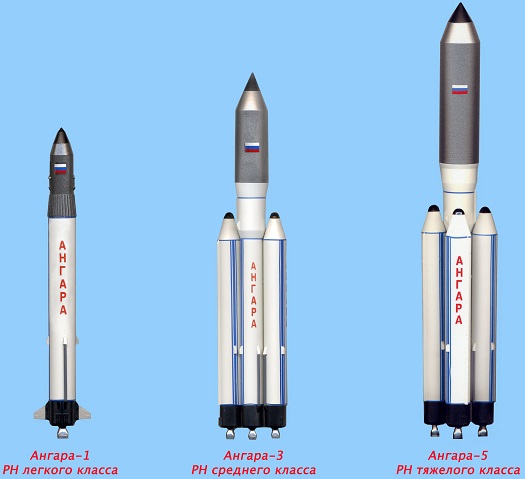The Russians are arguably decades in front of us in rocket development since the 1970’s. Actually when they duplicated our shuttle program, it was years in front of anything we had considered. They are proficient and are eager to put resources into incremental change on existing innovation. That is a critical distinction from our (U.S.) space program…
This is the reason that we have used Russian rocket engines for almost everything we send in space and or use Russia herself to send it to space. This was the demise of our space shuttle program, we rode on our laurels and lost our prize…
Consider this, despite the fact that we (U.S.) have plans for a few Russian rocket motors and we have lots of working engines to reverse engineer, we are not fit for building them on the grounds that we don’t know how to do the progressed metallurgy, included in those outlines and blueprints. Russian motors do things that American specialists had thought unimaginable until they saw the motor working and performing . We are still trying to match the capabilities of these rockets and we still have not mastered the metal compounds that make these rockets so unique and durable… (Space X is not in the same league! Yet!)
If you think that only their rockets are superior, then you are ignoring the fact that Russia has this same technology through out its country and we should think about that as they develop weapons…
| The Angara rocket family | |
| Function | Launch vehicle |
|---|---|
| Manufacturer | Khrunichev |
| Country of origin | Russia |
| Size | |
| Height | 42.7 m (140 ft)-64 m (210 ft) |
| Width | Angara A1.2 2.9 m (9 ft 6 in) Angara A5 8.86 m (29.1 ft) |
| Mass | 171,500 kg (378,100 lb)-790,000 kg (1,740,000 lb) |
| Stages | 2-3 |
| Capacity | |
| Payload to LEO (Plesetsk) |
3,800 kg (8,400 lb)-24,500 kg (54,000 lb) |
| Payload to GTO (Plesetsk) |
5,400 kg (11,900 lb)-7,500 kg (16,500 lb) |
| Associated rockets | |
| Comparable | Naro-1 used a modified URM-1 first stage |
| Launch history | |
| Status | Active |
| Launch sites | Plesetsk Site 35 Vostochny |
| Total launches | 1 (A1.2PP: 1) |
| Successes | 1 (A1.2PP: 1) |
| First flight | A1.2PP: July 9, 2014 |
| Boosters (A5) – URM-1 | |
| No boosters | 4 (see text) |
| Engines | 1 RD-191 |
| Thrust | 1,920 kN (430,000 lbf) (Sea level) |
| Total thrust | 7,680 kN (1,730,000 lbf) (Sea level) |
| Specific impulse | 310.7 s (3.047 km/s) (Sea level) |
| Burn time | 214 seconds |
| Fuel | RP-1/LOX |
| First Stage – URM-1 | |
| Engines | 1 RD-191 |
| Thrust | 1,920 kN (430,000 lbf) (Sea level) |
| Specific impulse | 310.7 s (3.047 km/s) (Sea level) |
| Burn time | Angara 1.2: 214 seconds Angara A5: 325 seconds |
| Fuel | RP-1/LOX |
| Second Stage – URM-2 | |
| Engines | 1 RD-0124A |
| Thrust | 294.3 kN (66,200 lbf) |
| Specific impulse | 359 s (3.52 km/s) |
| Burn time | Angara A5: 424 seconds |
| Fuel | RP-1/LOX |
| Third Stage (Optional, Angara A5) – Briz-M | |
| Engines | 1 S5.98M |
| Thrust | 19.6 kN (4,400 lbf) |
| Specific impulse | 326 s (3.20 km/s) |
| Burn time | 3,000 seconds |
| Fuel | N2O4/UDMH |
| Third Stage (Optional, Angara A5) – KVTK, under development | |
| Engines | 1 RD-0146D |
| Thrust | 68.6 kN (15,400 lbf) |
| Specific impulse | 463 s (4.54 km/s) |
| Burn time | 1,350 seconds |
| Fuel | LH2/LOX |
Russia’s space agency has launched a heavy version of the newly developed ecologically clean rocket family Angara. The booster is to take its mock payload right to the geostationary orbit – over 35,000 kilometers from the Equator.
“At 08:57 Moscow time, the heavy-class rocket Angara-A5 was launched by a Space Forces crew of the Arkhangelsk Region from the universal launch site of the state test facility of the Russian Defense Ministry [the Plesetsk Cosmodrome],” the ministry said in a statement.
The success was reported by Defense Minister Sergey Shoigu to President Vladimir Putin, who was monitoring the launch form Moscow via a video link.
The major peculiarity of this test launch has become its main goal: the rocket is to deliver its mock two-ton payload directly to geostationary orbit – the orbit right above the Equator that has a period of one sidereal day, or 23 hours 56 minutes and 4 seconds; objects rotating around the earth in this orbit can fly as far away as 35,700 kilometers from the planet’s surface.
Launching right into geostationary orbit has never been practiced before by any heavy booster prototype – usually trials are performed to a low orbit with altitudes of up to 2,000km before moving on to higher altitudes.
The first stage of the Angara-5 rocket, capable of delivering up to 25 tons to a low orbit, is powered by RD-191, arguably the world’s best “clean” engine that uses kerosene and oxygen as fuel.
Russia said at the beginning of 2014 that they would send a test rocket in December of 2014. They did and it was very successful…
Congrats Russia…
Posted by Kyle Keeton
Windows to Russia…
The copy scores 59.2 in the Flesch Reading Ease test, which is considered fairly difficult to read…
